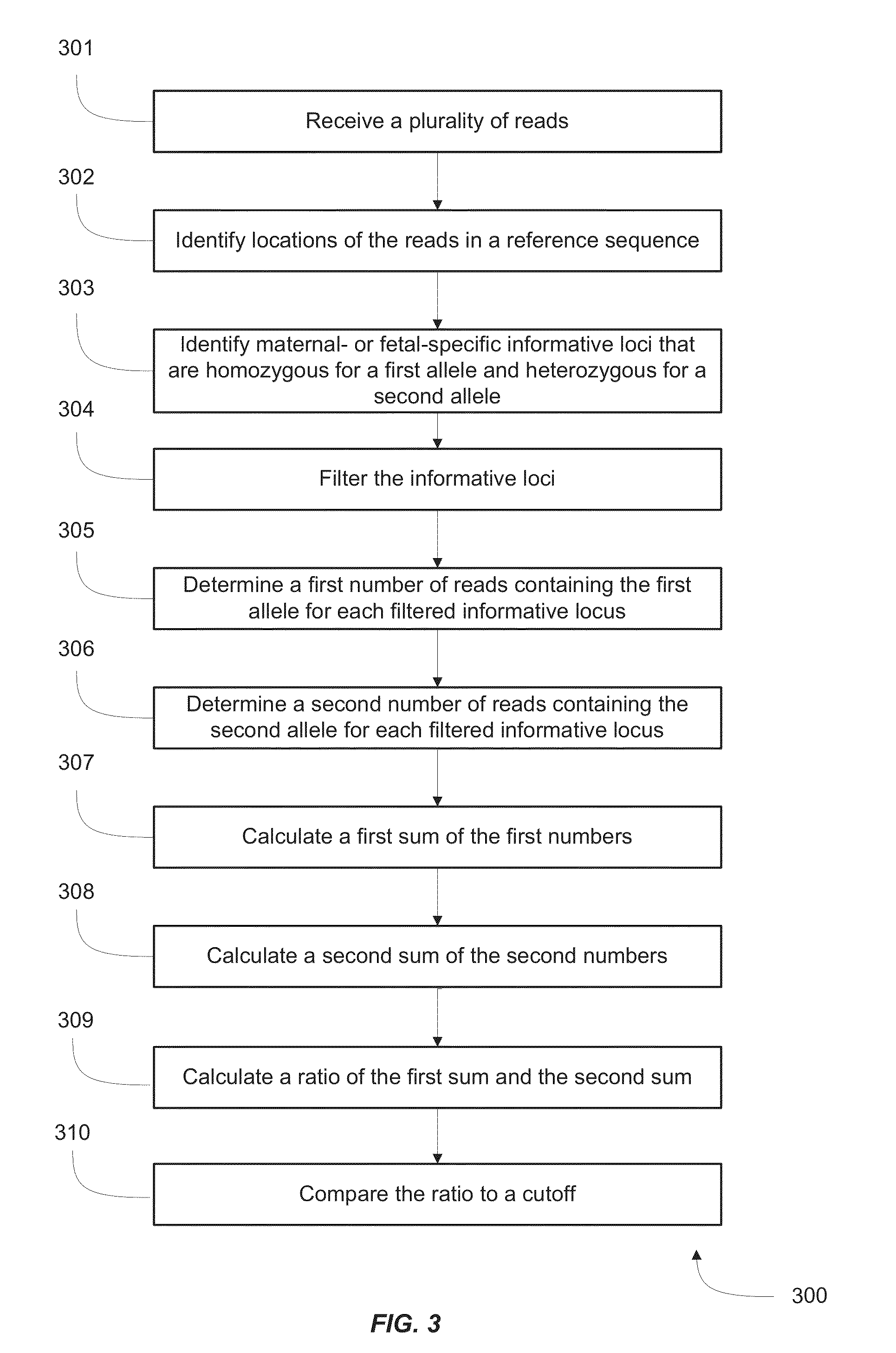Maternal plasma transcriptome analysis by massively parallel RNA sequencing
a plasma transcriptome and rna sequencing technology, applied in the field of maternal plasma transcriptome analysis by massively parallel rna sequencing, can solve the problems of limited ability, method not easy, and relatively limited plasma rna markers identified by this indirect method
- Summary
- Abstract
- Description
- Claims
- Application Information
AI Technical Summary
Benefits of technology
Problems solved by technology
Method used
Image
Examples
Embodiment Construction
I. Introduction
[0039]The presence of cell-free fetal RNA in maternal plasma was reported more than a decade ago11. Following this finding, many studies have since been conducted to detect circulating RNA of fetal and placental origin in maternal plasma1,10,12 Interestingly, the expression levels of placenta-specific transcripts in the plasma were found to be positively correlated with those in placental tissues10, underscoring the clinical utility of plasma RNA analysis as a noninvasive tool to monitor the placental or fetal health and development. Indeed, examination of maternal circulating RNA has found clinical applications for pregnancy- or placenta-related disorders such as preeclampsia2,13-15, intrauterine growth retardation4 and preterm birth8, as well as for noninvasive testing of fetal chromosomal aneuploidies5,7,16. Such developments highlight the potential utilities of RNA biomarkers for the molecular assessment of prenatal disorders.
[0040]Despite the promising outlook of...
PUM
| Property | Measurement | Unit |
|---|---|---|
| time | aaaaa | aaaaa |
| concentrations | aaaaa | aaaaa |
| plasma RNA | aaaaa | aaaaa |
Abstract
Description
Claims
Application Information
 Login to View More
Login to View More - R&D
- Intellectual Property
- Life Sciences
- Materials
- Tech Scout
- Unparalleled Data Quality
- Higher Quality Content
- 60% Fewer Hallucinations
Browse by: Latest US Patents, China's latest patents, Technical Efficacy Thesaurus, Application Domain, Technology Topic, Popular Technical Reports.
© 2025 PatSnap. All rights reserved.Legal|Privacy policy|Modern Slavery Act Transparency Statement|Sitemap|About US| Contact US: help@patsnap.com



